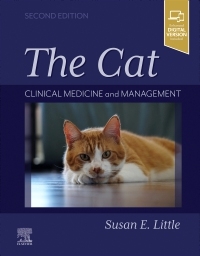
Water Use and Re-use in Aquaculture
Wiley-Blackwell (an imprint of John Wiley & Sons Ltd) (Verlag)
978-1-4051-6284-5 (ISBN)
- Titel wird leider nicht erscheinen
- Artikel merken
Marc Verdegem is based at The Wageningen University in The Netherlands. Laslo Varadi is at HAKI (The Research Institute for Fisheries, Aquaculture and Irrigation), Hungary. Uwe Barg is at The Food and Agriculture Organisation of the United Nations in Rome, Italy. James Muir is at the Institute of Aquaculture, Stirling, UK.
1 Review of water use worldwide. Short chapter (10-12 pages) setting a broad framework of global water resources and global water use. The chapter should contain a few world maps with information on:. * Fresh water availability (5-6 categories, showing which countries have too much, enough, too little fresh water). * Water use for agriculture (in percentages of total water availability). * Balance between rain fed and irrigated areas. Trends in future water availability will also be outlined:. * Shifts from agriculture to industry and urbanization. * Demographic developments and impact on water availability. Authors: International wetland bureau, Water Group Wageningen UR. 2 Global water use in aquaculture. A review of water use in aquaculture by country. Attention is given to the amount of aquatic products produced and the related water use. Such a comparison will allow to make a by country comparison for aquaculture water use efficiency (for instance MT produced/m3 water). Authors: Stirling University. 3 Water use in the aquaculture production chain. Water uses in aquaculture include on-farm water use (evaporation + seepage + drainage), water treatment/purification systems, fish processing, and fish food production (food ingredient production, processing). Additional water use is related to the construction of facilities, energy use, etc. The goal of this chapter is to review and to define the water use along the whole aquaculture value chain, and to define which types of water use will be considered in the rest of the study. Authors: Verdegem/Varadi. 4 Future growth in aquaculture production and related water needs. FAO has published various scenario's for future development of aquaculture. The goal of this chapter is to related future growth in aquaculture developments to future demands for water use, and where possible to outline water scarcity limits for future aquaculture development, given present technologies stay the same. Authors: FAO/Barg. 5 Approaches to reduce water use in aquaculture. 5.1 Intensification of pond aquaculture. Recent insights in pond production techniques allow to increase production per unit surface area, without negative impacts on sustainability and water use. Intensification leads to reduction in water use per amount produced. This chapters reviews recent developments in pond aquaculture and analyses the impact on water use in aquaculture. Techniques to reduce seepage losses will also be discussed. Authors: Avnimelech/ Verdegem. 5.2 Recirculation technology. 5.2.1 Outdoor semi-closed and closed systems. This chapter reviews developments in semi- and closed production technology of outdoor systems in relation to water use. Besides the use of artificial wetlands, stabilization ponds and activated sludge, partitioned aquaculture systems are also reviewed. Authors: Pekar/Brune/Stirling team. 5.2.2 Indoor recirculation systems. This includes a review of greenhouse production systems and super intensive indoor recirculation systems, considering water use. Authors: Blancheton/Eding. 5.2.3 Desert aquaculture. This chapter describes options for aquaculture development under desert conditions, and technologies for water conservation. Authors: Neori/Appelbaum/Moses. 6 Costs of water use in aquaculture. 6.1 Direct and indirect costs of water use in aquaculture. Pricing policy of water use in various European and Asian countries will be reviewed and compared, as well as the consequences on aquaculture production costs. Often different price tariffs are used for water for agricultural, industrial and human use. Authors: Stirling/FAO. 6.2 Economics of shared water use in integrated systems. Use of ponds as nature reserves, recreation, flood control, recharge of aquifers and water storage. This also includes the use of reservoirs and rivers for fish production. Effect of joint use on total costs. Authors: 7 Recommended practices for water use in aquaculture. This chapter draws conclusions on the basis of previous chapters and gives recommendations for reducing water use in aquaculture, and discusses future trends in aquaculture water use. The year 2020 and 2040 are proposed as reference years. Authors: Editors. 8 Research and training priorities. This chapter reviews priorities for training and research by countries/regions, including a cost estimate. Authors: Editors, FAO input. Index
| Verlagsort | Chicester |
|---|---|
| Sprache | englisch |
| Themenwelt | Veterinärmedizin ► Kleintier |
| Weitere Fachgebiete ► Land- / Forstwirtschaft / Fischerei | |
| ISBN-10 | 1-4051-6284-8 / 1405162848 |
| ISBN-13 | 978-1-4051-6284-5 / 9781405162845 |
| Zustand | Neuware |
| Haben Sie eine Frage zum Produkt? |
aus dem Bereich


